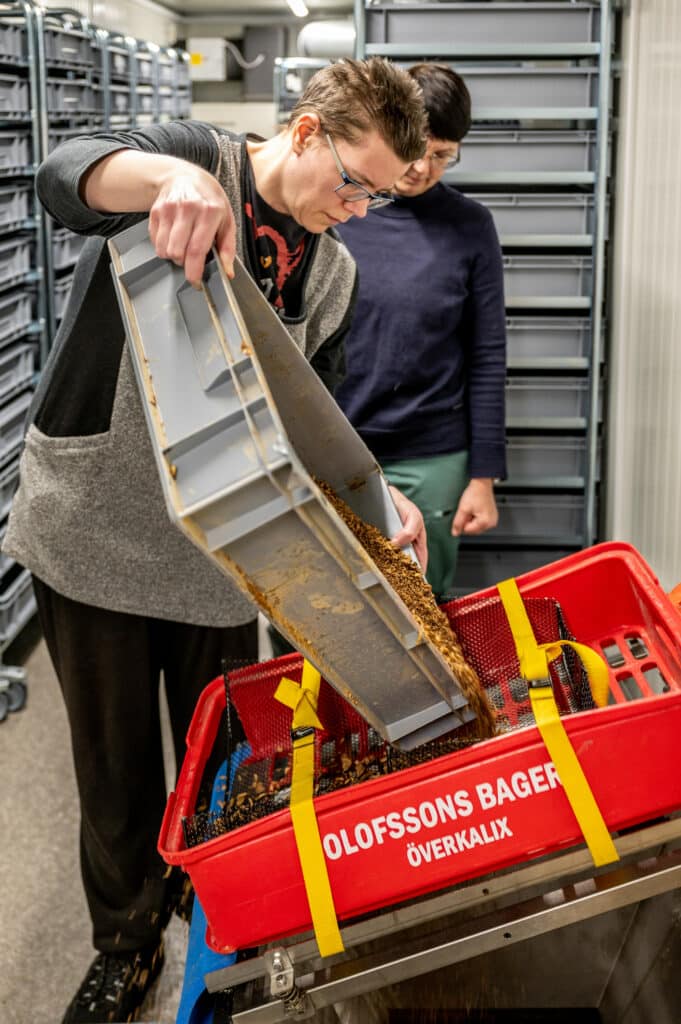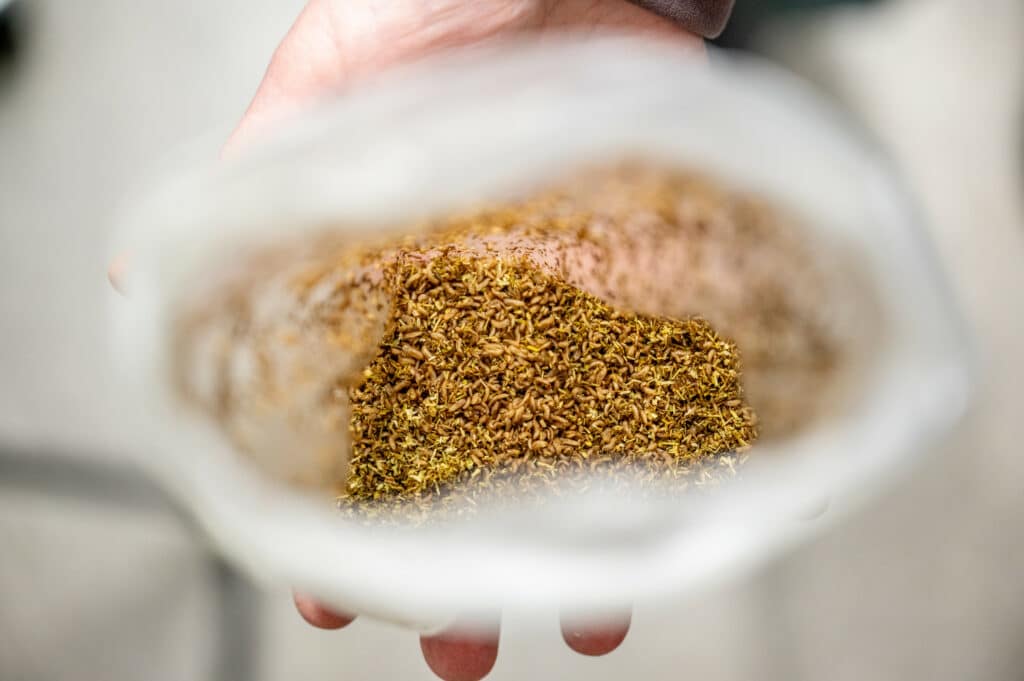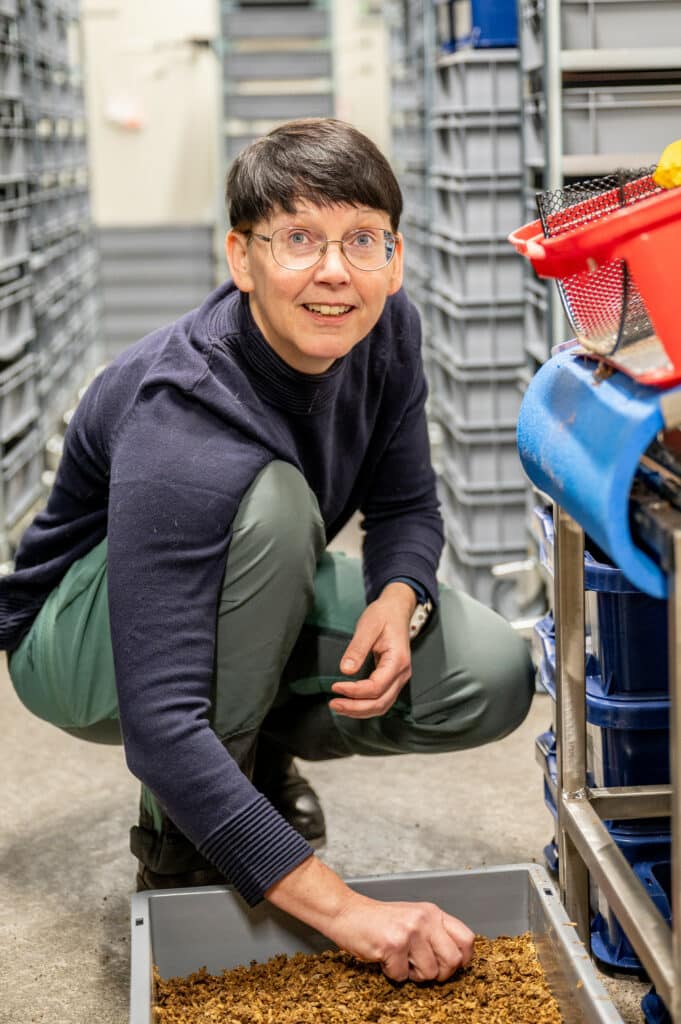Could insect farming be the key to more sustainable aquaculture? In Boden, a pioneering project is underway to explore whether insect-based feed can serve as a viable alternative to traditional fishmeal. Initial tests have now begun, yielding promising results.
In January, the first larvae arrived in Boden. Within just fourteen days, they have grown from barely a millimeter in size to several centimeters, reaching harvest maturity. The project, based in the Plug & Play area, investigates the potential of insect protein as a sustainable replacement for fishmeal in farmed fish production—an innovation with the capacity to significantly reduce environmental impact.
The larvae are fed various types of food waste, materials that would otherwise be discarded, to evaluate how different compositions influence growth rates. In May, a critical trial will take place: live larvae will be introduced as feed at Vattenfall’s compensation breeding facility, where fish destined for release into the Lule River will be tested on an alternative diet. If successful, this initiative could catalyze a paradigm shift in the fish feed industry, reducing dependence on marine resources.
“The results so far are highly encouraging. The larvae are growing rapidly and adapting well to the controlled environment. We now look forward to the full-scale trials in May,” says Catharina Ljungcrantz, Project Coordinator.
 Each container holds approximately 12,000 larvae sustained on food waste. Current research focuses on evaluating how different waste compositions impact growth. The May trials will further assess the impact of larval size on feeding efficiency in aquaculture applications.
Each container holds approximately 12,000 larvae sustained on food waste. Current research focuses on evaluating how different waste compositions impact growth. The May trials will further assess the impact of larval size on feeding efficiency in aquaculture applications.
A scalable business opportunity
Beyond its environmental benefits, the project also has a socioeconomic dimension. Through collaboration with DC Farming and Boden Municipality, the initiative provides practical training in insect farming, integrating workforce development with sustainable innovation.
– “I have been surprised by how efficient and accessible this process is, as well as the engagement it generates. It is rewarding both to work alongside participants and to observe the rapid growth cycles of the larvae,” says Catharina Ljungcrantz.
 When the larvae arrive in Boden, they measure less than a millimeter. Within just 14 days, they multiply in size several times over, exceeding one centimeter and reaching the optimal stage for harvest.
When the larvae arrive in Boden, they measure less than a millimeter. Within just 14 days, they multiply in size several times over, exceeding one centimeter and reaching the optimal stage for harvest.
The project’s broader objective is to assess whether insect farming technology can be scaled and commercialized within social enterprise models. If results continue to demonstrate viability, Boden could position itself at the forefront of sustainable fish feed innovation—contributing yet another key element to the municipality’s ongoing green industrial transformation.
This initiative is part of a larger research effort on next-generation sustainable feed, exploring alternative protein sources such as insects and feed mussels to replace wild-caught fish and soy in animal nutrition. More information on the broader initiative can be found via Axfoundation: Major Initiative on Future Feed.
The project is carried out within the framework of DC Farming, which is financed and run in collaboration with Sunderby Folkhögskola, Boden Municipality and Coompanion Norrbotten, with support from the European Social Fund and Region Norrbotten. More information about the project actors and purpose can be found here: DC Farming.
 Catharina Ljungcrantz, project coordinator.
Catharina Ljungcrantz, project coordinator.